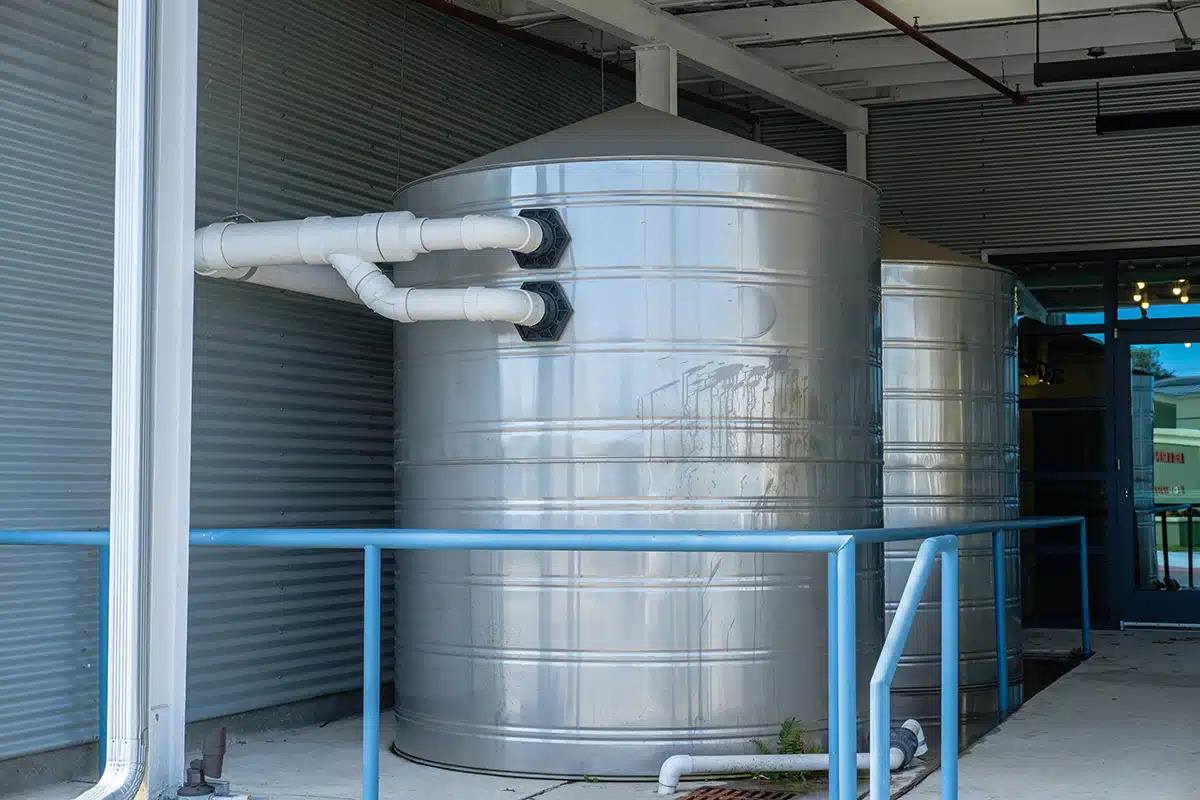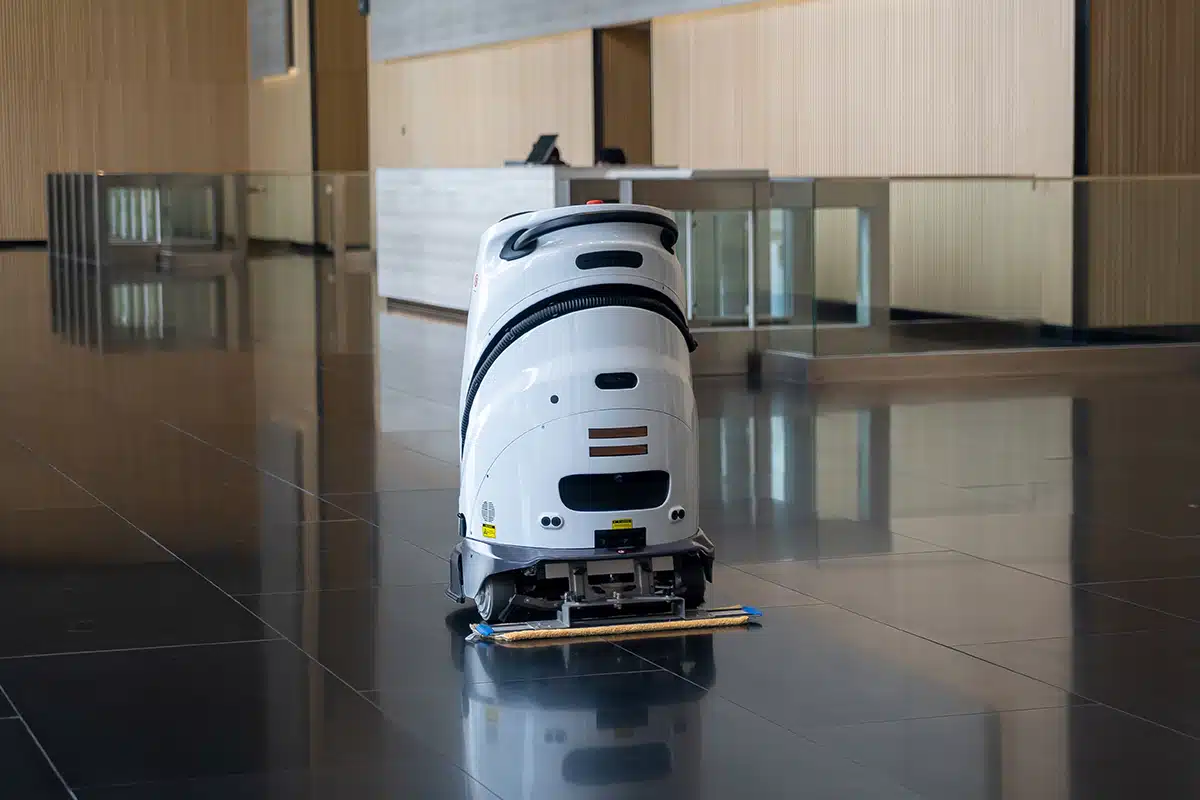In the 1950s, it was a best practice to replace machine parts based on a strict schedule, regardless of a part’s condition. While this approach avoided equipment failure, the downside was that parts which could have continued to function flawlessly were discarded, creating inefficiency and unneeded expense. Fast forward to today, and facilities management best practices look a lot different. Predictive maintenance, automation, artificial intelligence, and other developments have reshaped facilities and the facilities management profession. Here are seven best practices that will help today’s facilities managers optimize their operations.
1. Integrate AI for Predictive Maintenance
Facilities management best practices are changing, and optimizing building operations may require new protocols.
Predictive maintenance in facility management means using data and analytics to predict equipment failure, so that repairs can be made proactively—before faulty equipment causes problems or facility shutdowns. Although they sound similar, preventative maintenance and predictive maintenance are not the same. Preventative maintenance relies on evaluating machinery at regular intervals, no matter how frequently or heavily a piece of equipment is used. Predictive maintenance, on the other hand, is more nuanced; it relies on continuous monitoring and analysis of equipment. Relying on large data sets, predictive maintenance is more precise than preventative maintenance, enabling facilities professionals to more efficiently maintain facility assets.
A broad spectrum of industries, from oil and gas to commercial real estate, are using predictive maintenance. By monitoring equipment through data-gathering sensors that feed AI algorithms, companies can detect potential problems and prioritize maintenance. Additionally, these AI tools help companies gain a deeper understanding of the root causes of equipment failure. One example of using artificial intelligence for predictive maintenance is GE Digital’s SmartSignal. This predictive maintenance software allows companies across multiple industries to find and act on potential equipment problems, preventing downtime for essential equipment.
2. Take a Systematic Approach to Sustainability
According to the U.S. Department of Energy (DOE), more than a third of total U.S. greenhouse emissions are due to buildings. To address this challenge, the federal government, as well as some states, are calling for net zero buildings—buildings that reduce energy use through numerous energy-saving features and technologies. But how do you achieve a building that is more efficient, especially if you aren’t building from scratch? A report from Lawrence Berkeley National Laboratory recommends taking a systematic, comprehensive approach to retrofitting. For example, rather than just swapping out old light bulbs, a systematic approach will go further and also integrate automated shading and electrochromic glazing on windows to reduce energy use.
3. Creatively Conserve Water
The American Water Works Association (AWWA) estimates that commercial, industrial, and institutional landscapes utilize 2.4 billion gallons of water daily. With water scarce and demand for it high, companies benefit by seeking out water-saving solutions for landscaping and irrigation. One easy solution is rainwater—it’s free! By capturing rainfall in barrels or cisterns, companies can save money, and perhaps more importantly, decrease their dependence on local water infrastructure. Capturing and utilizing rainwater onsite also makes water management more effective, and avoids the unintended pollution and erosion caused by untreated, unmanaged water surges.
Graywater—lightly used water from sinks, bathtubs, and showers—can also be reused. To save money, some companies have invested in closed-loop water recycling systems that collect, treat, and reuse graywater, minimizing the need for freshwater intake and lowering wastewater discharge. If your company isn’t able to recycle its graywater, rainwater capture can still be easily handled with a small investment in water capture receptacles.

4. Facilities Management Best Practices for Compliance and Regulations
Today more than ever, it’s essential to be well versed in industry-specific mandates, regulations, and safety standards. Mandated regulations from OSHA, EPA, ICC, and other agencies carry stiff penalties for violations. So, how can you stay in compliance? One way is to regularly schedule training for your technicians. Another best practice is to keep meticulous records to show that you have complied with all protocols and requirements. But don’t stop there. It’s not enough to keep your own team in compliance. Many facilities managers delegate to third-party contractors, and it’s important that these contractors are also in compliance. This is why it’s crucial to communicate clearly with your contractors and keep accurate records. And if there are serious noncompliance issues, be ready to switch vendors. Remember, it’s your reputation on the line.
5. Adopt Robotics and Automation
As in many industries, robots can help solve labor shortage and other issues in facilities maintenance. Sophisticated floor-cleaning robots, for example, use laser scanners and ultrasonic detectors to maneuver around people and clean a wide variety of surfaces. Some models can clean more than 200,000 square feet in a single day. And when these robots are finished, there is no need for a human to put them away. Not only do these robots automatically return to their docking station, but they also refill themselves with cleaning fluid. And for environments where more stringent cleaning is necessary, such as hospitals, robots equipped with disinfection technologies like pulsed xenon UV light can kill bacteria within minutes. In these situations, where a sterile environment is critical, robots can be especially useful, since they never take vacations or call in sick.

In the same way that robots are changing how facilities are cleaned, automation is modifying how they’re managed. CMMS software, for example, enables managers to track maintenance activities and scheduling costs. It automates the management of workflows, optimizes routing, and enables organized recordkeeping for reporting and auditing, maximizing a facility’s MRO (maintenance, repair, and operations).
6. Prioritize Occupant Safety and Wellness
Since the pandemic, businesses, governments, and the public have taken an increased interest in indoor air quality. According to Joe Allen, associate professor at Harvard and founder of the Healthy Buildings Program, buildings are at the center of a public health crisis: “They represent one of the greatest public health opportunities of this century. Therefore, the future of healthy buildings must be one where they are the norm for everyone, not just a privilege for a select few.” Allen emphasizes that improvements don’t have to be expensive. They can be as simple as updating air filtration systems. A good air handling system can help lower the incidence of infectious illnesses such as flu, RSV, and COVID-19. These systems can also protect against allergies and reduce the health impacts of wildfire smoke and other air pollutants.
If you are looking for ways to adopt facilities management best practices in terms of health and well-being, consider pursuing WELL certification. Indoor air quality is only one of ten categories of WELL certification, a global certification developed by the International WELL Building Institute that recognizes buildings constructed and designed to support the wellbeing and health of their occupants. Some of the issues that WELL certification addresses include:
- Designing a building to encourage physical activity
- Creating spaces that minimize noise disruptions
- Providing relaxation and stress reduction spaces
- Reducing occupant exposure to hazardous materials
Every type of facility, from the office to the school building, is eligible for WELL certification.
7. Monitor the Condition of Your Facility
No list of facilities management best practices would be complete without mentioning the need for monitoring. While sensors and other technologies have made it easier than ever to monitor conditions within a facility, it’s not always clear how the information gathered should be interpreted and applied. That’s where the facility condition index (FCI) comes in. Launched in the U.S. in 1991 by the National Association of College and University Business Officers, the FCI allows companies to assess the overall condition of a building, as compared to typical buildings of the same size and configuration.
To determine a facility’s FCI, the data gathered by automated technologies is put into the FCI formula. The resulting index number allows facilities managers to determine the relative condition of a facility by comparing the cost of needed repairs to the total replacement value of the facility. A high FCI indicates that significant repairs are needed, while a lower score means that the facility is in good shape. With a current FCI, facility managers can:
- Effectively allocate resources by identifying the areas of greatest need
- Predict the expected useful life of components and plan strategically for upgrades
- Track the facility’s condition over time
- Provide quantitative measures of facility health to stakeholders to help justify funding requests
- Identify facilities that may pose safety risks due to deteriorating conditions
Monitoring the condition of facilities, like all the facilities management best practices listed here, is not a magical solution to facilities management. But companies that are able to adopt at least a few of these practices will ensure that their facilities are efficient, safe, and ready for whatever the future may bring.